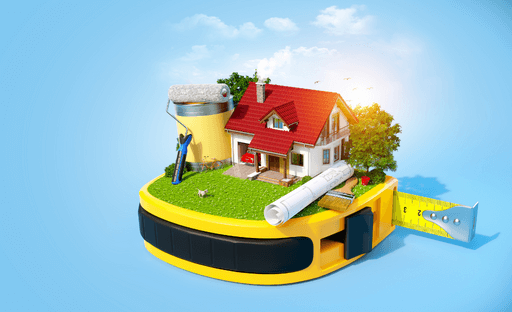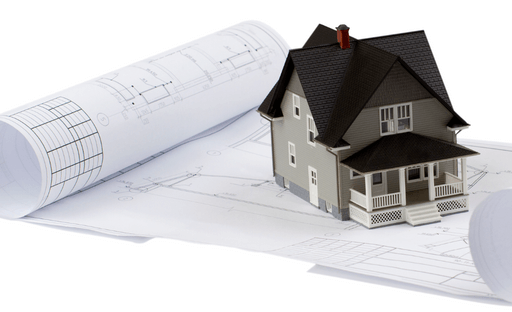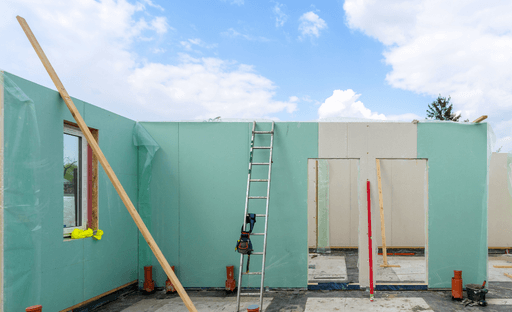Modern Construction
The construction industry has seen tremendous advances in recent years, with modern techniques and technologies revolutionising the way we build. From harnessing technology to streamline processes to leveraging automation for improved efficiency, there are many ways that modern construction can benefit us all. In this blog article, we will explore the benefits of modern construction techniques and examine how innovative materials can be used to optimise safety and quality while improving building processes. We will also look at how automation can be leveraged for increased efficiency and discuss how to design solutions can help create a safer working environment.
The construction industry has come a long way in the past few decades. Modern construction techniques and materials have revolutionised the way buildings are designed, built, and maintained. From prefabricated components to advanced computer-aided design (CAD) software, today’s builders have access to an array of tools that make constructing structures faster and more efficient than ever before.
One of the most significant advances in modern construction is prefabrication. Prefabricated components such as walls, floors, ceilings and roof trusses can be manufactured offsite using high-tech machinery and then shipped to a building site for assembly. This process reduces labour costs while also improving quality control since each component is produced under controlled conditions with minimal human intervention required onsite during installation or assembly.
Computer-aided design (CAD) software has also had a major impact on modern construction projects by streamlining many aspects of the planning process from initial concept designs through detailed drawings for fabrication or installation purposes. CAD programs allow architects and engineers to quickly create 3D models that accurately represent their designs which can then be used for visualisation purposes or shared with other stakeholders involved in the project such as contractors or suppliers who need precise measurements when fabricating components offsite prior to delivery at the building site itself
In addition to these technological advancements, there are now several green initiatives being implemented within modern construction projects which aim at reducing environmental impacts associated with traditional methods of building including energy efficiency measures like improved insulation systems along with renewable energy sources like solar panels installed directly onto roofs during new builds. These efforts not only help reduce emissions but often result in cost savings over time due to increased efficiency levels achieved by utilising these technologies
Finally, safety protocols have been updated significantly over recent years resulting in much safer working environments both inside buildings themselves as well as outside where workers may be exposed to hazardous elements such as dust particles, fumes etc. Employers must ensure all relevant safety regulations adhere to throughout any given project ensuring all personnel remain safe while carrying out their duties
Modern Construction techniques offer numerous advantages compared to those employed just two decades ago allowing builders greater flexibility when it comes to designing structures efficiently while still meeting stringent standards set forth by governing bodies worldwide.
Exploring the Benefits of Modern Construction Techniques

Modern construction techniques have revolutionised the way we build and manage projects. From prefabricated components to advanced materials, these methods are making it easier than ever for builders to complete projects faster and more efficiently. But what exactly are some of the benefits that come with modern construction?
One major benefit is cost savings. By using prefabricated components, builders can save time on labour costs as well as reduce material waste due to improved accuracy in measurements and cuts. Additionally, modern building materials such as steel framing or insulated concrete forms (ICF) provide superior strength while also being lightweight which further reduces labour costs associated with installation.
Another advantage of modern construction techniques is improved safety standards for workers on site. Prefabrication means less manual labour involved in assembly which helps reduce potential injuries from heavy lifting or other strenuous activities associated with traditional building processes. Advanced materials such as ICF also offer greater resistance against fire, wind, water damage and seismic activity – all important considerations when constructing a structure that will stand the test of time!
Finally, one cannot underestimate the environmental impact of modern construction practices either; by reducing material waste through precision cutting methods and utilising energy-efficient insulation systems like ICF walls – buildings become much more sustainable over their lifetime compared to traditional structures built without these technologies in mind!
Overall there are many advantages offered by today’s advanced building techniques; from cost savings to increased safety standards – they make it possible for us not only to construct better quality structures but do so while minimising our environmental footprint at the same time.
Harnessing Technology to Streamline Building Processes

Modern construction is all about harnessing technology to streamline building processes. From 3D printing and robotics to augmented reality and artificial intelligence, the possibilities are endless. By leveraging these innovative technologies, builders can reduce costs, improve safety, increase efficiency and speed up project completion times.
3D printing has revolutionised the way structures are built by allowing for rapid prototyping of components before they’re even manufactured in bulk. This reduces material waste while also enabling more complex designs that would have been impossible with traditional methods. Robotics can be used to automate tedious tasks such as welding or painting which not only increases accuracy but also improves worker safety by reducing their exposure to hazardous materials or conditions.
Augmented reality (AR) allows workers on-site to access real-time data from a remote location without having physical access themselves – this could include blueprints or instructions for the assembly of components as well as live video feeds from other locations within the site itself which help them stay informed at all times during a project’s progress without having any need for travel between sites themselves! Artificial intelligence (AI) is being used increasingly in modern construction projects too; it can help identify potential problems before they become costly issues further down the line by analysing vast amounts of data collected throughout each stage of development quickly and accurately – something no human could do alone.
The use of technology in modern construction has opened up new possibilities that weren’t available just a few years ago; it’s now possible to build faster, safer and cheaper than ever before thanks largely due to its implementation into every day operations across many industries worldwide.
Examining the Impact of Innovative Materials on Construction

Modern construction is constantly evolving, with innovative materials playing a key role in driving the industry forward. From advanced composite materials to new forms of insulation and coatings, these cutting-edge products are revolutionising the way we build. By examining their impact on the construction process, we can gain valuable insights into how they will shape our future projects.
One of the most significant impacts of modern materials is their ability to reduce project costs while increasing efficiency and safety standards. Advanced composites offer superior strength-to-weight ratios compared to traditional building materials such as steel or wood, allowing for lighter structures that require less material input overall. This not only reduces labour costs but also decreases energy consumption during production and transportation – an important factor when considering sustainability goals for any given project.
Innovative insulation solutions are also making waves in modern construction by providing better thermal performance than ever before without compromising structural integrity or aesthetics. These high-performance insulating systems help keep buildings comfortable year-round while reducing energy bills over time – a win-win situation for both builders and homeowners.
Finally, specialised coatings have become increasingly popular due to their ability to protect surfaces from weathering effects like corrosion or UV damage without sacrificing style or colour options available on traditional paints and finishes. With so many different types available today – including water-repellent coatings that provide extra protection against moisture intrusion – it’s easy to find one that fits your needs.
Overall, examining the impact of innovative materials in modern construction reveals just how far this industry has come over recent years – offering improved performance at a lower cost than ever before! As more advanced products continue entering the market every day, there’s no telling what kind of exciting possibilities lie ahead for us all.
How Can We Leverage Automation for Improved Efficiency?
Modern construction is increasingly leveraging automation to improve efficiency. Automation can be used in a variety of ways, from streamlining processes and improving accuracy to reducing labour costs and increasing productivity. By automating mundane tasks, companies are able to free up resources for more complex projects that require human expertise. Matrix Structures
One way automation can help increase efficiency is by eliminating manual data entry errors. Automated systems allow for accurate data collection and analysis which helps reduce the time spent on tedious paperwork or double-checking information manually. This allows teams to focus their efforts on higher-value activities such as project planning or customer service instead of spending time correcting mistakes caused by manual inputting errors.
Another way automation can help with improved efficiency is through predictive analytics capabilities which enable teams to anticipate potential problems before they occur, allowing them to take proactive measures rather than reactive ones when issues arise during a project’s lifecycle. Predictive analytics also provide insights into how best practices could be implemented in order to maximise output while minimising wastefulness throughout the entire process chain – from design all the way through delivery and installation at site locations – resulting in increased savings overall for both customers and businesses alike.
Finally, automated systems are capable of providing real-time updates about progress made on projects so that stakeholders have an accurate understanding of what has been accomplished thus far without having to wait until completion before getting feedback about progress made along the way – this helps ensure that everyone involved stays informed throughout every step taken towards successful completion of any given task or project at hand.
In conclusion, modern construction stands greatly benefits from leveraging automation technology as it provides many opportunities for improved efficiency across multiple areas including reduced labour costs due to its ability to automate mundane tasks; elimination of manual data entry errors; predictive analytics capabilities; as well as providing real-time updates regarding the progress being made – all leading towards increased savings overall both customers & businesses alike!
Optimising Safety and Quality with Modern Design Solutions
Modern construction projects require a focus on both safety and quality. Fortunately, modern design solutions can help optimise these two important aspects of the build. By utilising advanced technologies such as Building Information Modeling (BIM) and Autonomous Robotics, contractors are able to ensure that their projects meet all safety requirements while also achieving the highest level of quality possible.
BIM is an invaluable tool for optimising safety in construction projects by providing detailed 3D models which allow for precise planning and analysis of potential risks before beginning any work on site. This helps reduce costly mistakes during the building process, as well as ensures that all necessary precautions have been taken to keep workers safe from harm while they carry out their tasks. Additionally, BIM allows contractors to easily identify areas where additional measures may be needed in order to further improve worker safety or prevent accidents from occurring in the future.
Autonomous robotics is another great way for contractors to maximise both safety and quality when it comes to modern construction projects. These robots can be programmed with specific instructions which enable them to complete certain tasks without direct human supervision – thus reducing risk factors associated with manual labour activities such as falls or equipment malfunctions due to operator error or fatigue-related issues. Furthermore, autonomous robots often produce results that are more consistent than those achieved through traditional methods; this means higher levels of accuracy throughout each stage of a project’s development cycle – resulting in fewer delays due to unforeseen circumstances along the way.

In conclusion, modern design solutions like BIM and Autonomous Robotics offer numerous benefits when it comes time to constructing new buildings or renovating existing ones; not only do they help optimise both safety standards and overall product quality but they also provide cost savings over traditional methods thanks largely due their ability automate many processes involved during each phase of a project’s lifecycle.






